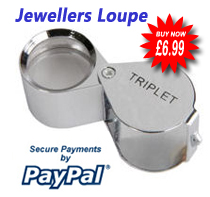Good-looking images and glowing descriptions seem to work better in these categories than any others and it is easy to get carried away.
Some sellers are just plain tricksy, others just don’t know what they are selling so make genuine mistakes in their descriptions, but in between these, you can find reputable sellers offering good deals.
You need to ensure that they are reliable before you part with cash so be sure to check their feedback and don’t be afraid to ask questions.
Here are a few of the most misleading terms you can find. Quite often, these apply to new gold and silver jewellery items.
“Sterling silver plate” or “sterling silver filled”- misleading descriptions that sound so much better than “silver plate” or silver filled.”
Sterling silver has to be hallmarked and contain 92.5% (925) silver content, however sellers sometimes use the word “sterling” as a general description for silver.
Sterling silver items cost more than items described as silver-plated or silver filled so, sellers attract more customers by creating this confusion.
The proper term for these items is "silver plated" or "silver filled."
Silver filled means it is a base metal with a layer of plate silver. There should be 10% silver content of the weight but this may not be the case.
Silver Plated refers to any base metal that is plated with a layer of pure silver.
“Gold filled sterling silver” is a meaningless and misleading phrase.
Is it gold plated sterling silver? Or is it gold coloured silver plate? Or what?
Nine times out ten if you ask the seller, he or she won’t know either. So probably best to avoid anything using this description.

"Gold filled" and "Rolled gold" are other nice sounding descriptions that make the object on offer seem valuable.
This is basically gold plate but technically speaking, the weight of rolled gold should make up 1/20 of the total metal weight and it may come with a hallmark.
If it does have a hallmark, you can check it out with the hallmark guide but be aware that the item is not solid gold so the gold content is not as high as it looks.

Gold plate should have a hallmark that signifies it as such.
Nickel silver is another misleading term.
Nickel silver is not really silver at all but an alloy usually made of nickel copper and zinc and sometimes containing a tiny silver content of around 2%.
This low value material is often described as Alpaca Silver and is commonly used in jewellery.
It looks good but it is not really silver at all and in addition, Alpaca silver is not hypo allergenic as is sometimes advertised.
Subscribe to this site by email











